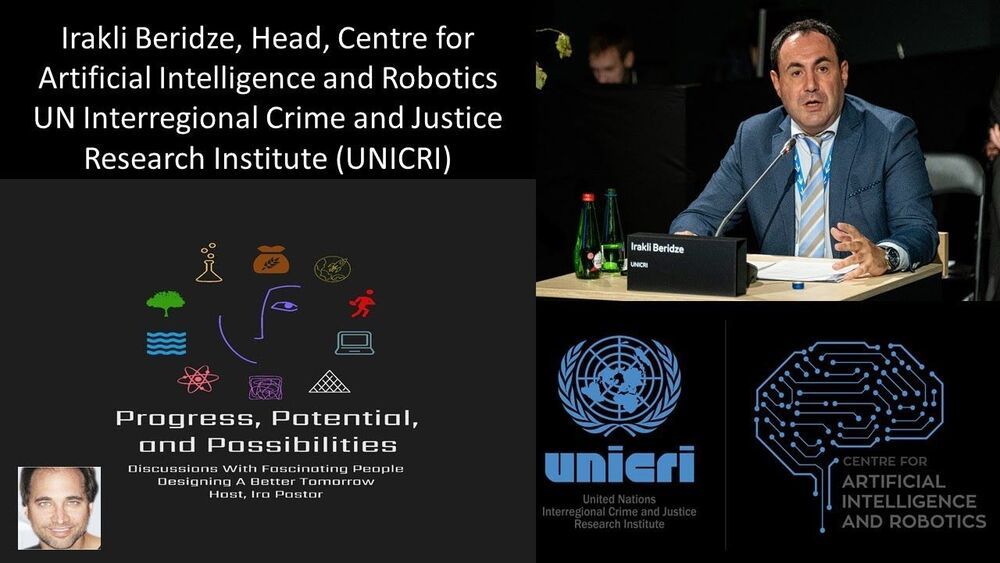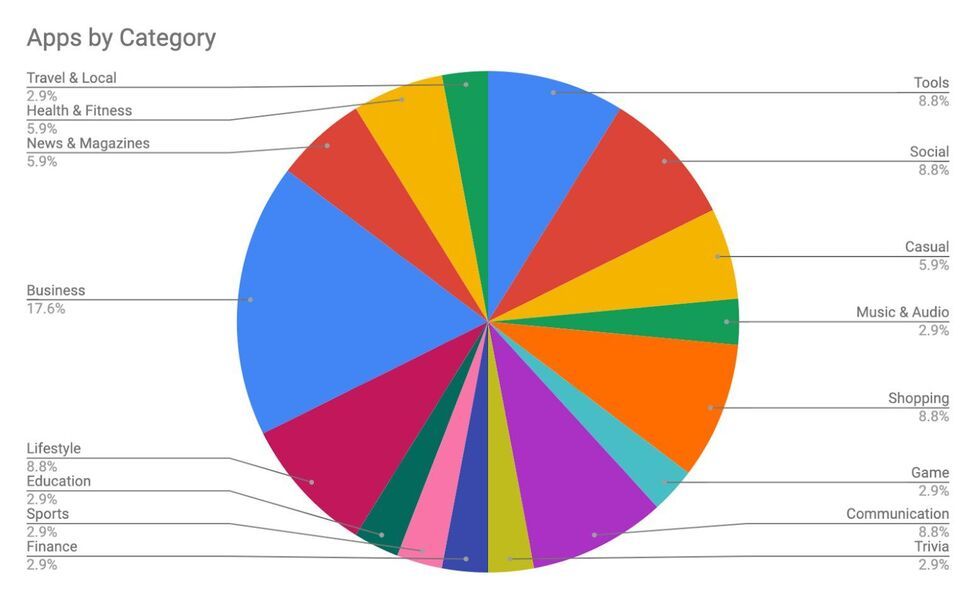Intel Corp Chief Executive Officer Pat Gelsinger will virtually attend a meeting being put together by President Joe Biden’s administration for April 12 to discuss the semiconductor supply chain issues disrupting U.S. automotive factories, according to a person familiar with the matter. Reuters previously reported the meeting will include Biden’s national security adviser, Jake Sullivan, and a top economic aide, Brian Deese, as well as chipmakers and automakers. Gelsinger last month said Intel will spend $20 billion to build two new chip factories in Arizona.
Category: security – Page 77
AI makes edge and IoT smarter
Posted in robotics/AI, security
Implementing artificial intelligence at the edge can not only reduce latency and networking costs but also improve security and unlock the power of distributed intelligence.
LONDON (AP) — The rainbow flag flew proudly Thursday above the Bank of England in the heart of London’s financial district to commemorate World War II codebreaker Alan Turing, the new face of Britain’s 50-pound note.
The design of the bank note was unveiled before it is being formally issued to the public on June 23, Turing’s birthday. The 50-pound note is the most valuable denomination in circulation but is little used during everyday transactions, especially during the coronavirus pandemic as digital payments increasingly replaced the use of cash.
The new note, which is laden with high-level security features and is made of longer-lasting polymer, completes the bank’s rejig of its paper currencies over the past few years. Turing’s image joins that of Winston Churchill on the five-pound note, novelist Jane Austen on the 10-pound note and artist J. M. W. Turner on the 20-pound note.
HENDERSON, Nev.—(BUSINESS WIRE)—Artificial Intelligence Technology Solutions, Inc. (OTCPK: AITX), today announced that its wholly-owned subsidiary Robotic Assistance Devices (RAD) has entered into an agreement with EAGL Technology, Inc. to offer EAGL’s Gunshot Detection System (GDS) in all present and foreseeable future RAD devices.
“We have been receiving repeated requests that gunshot detection capabilities be built into RAD devices from industries as varied as transit operators, retail property managers, and law enforcement. Integrating EAGL’s technology into RAD’s autonomous response solutions should be well received by all of the markets we serve” Tweet this
EAGL Technology was established in 2015 after acquiring gunshot ballistic science developed by the Department of Energy (DOE) Pacific Northwest National Laboratory (PNNL). EAGL has advanced this technology by creating a state-of-the-art security system. The EAGL product offering utilizes the company’s patented FireFly® Ballistic Sensor technology which RAD will offer, as an integrated option, on all mobile and stationary security solutions. EAGL clients include Honeywell, Johnson Controls, Siemens and many more.
STUTTGART, Germany — NATO and its member nations have formally agreed upon how the alliance should target and coordinate investments in emerging and disruptive technology, or EDT, with plans to release artificial intelligence and data strategies by the summer of 2021.
In recent years the alliance has publicly declared its need to focus on so-called EDTs, and identified seven science and technology areas that are of direct interest. Now, the NATO enterprise and representatives of its 30 member states have endorsed a strategy that shows how the alliance can both foster these technologies — through stronger relationships with innovation hubs and specific funding mechanisms — and protect EDT investments from outside influence and export issues.
NATO will eventually develop individual strategies for each of the seven science and technology areas — artificial intelligence, data and computing, autonomy, quantum-enabled technologies, biotechnology, hypersonic technology, and space. But for the near future, the priority is AI and data, said David van Weel, NATO’s assistant secretary general for emerging security challenges.
AI And Robots For Law And Order — Irakli Beridze — Head, Artificial Intelligence and Robotics, UNICRI – United Nations Interregional Crime and Justice Research Institute.
Irakli Beridze is the Head of the Centre for Artificial Intelligence and Robotics at The United Nations Interregional Crime and Justice Research Institute (UNICRI).
With a Master’s Degree in International Relations and National Security Studies, and a law degree, Mr. Beridze has more than 20 years of experience in leading multilateral negotiations, developing stakeholder engagement programs with governments, UN agencies, international organizations, private industry and corporations, think tanks, civil society, foundations, academia, and other partners on an international level.
In mobile application development, server-side storage of the application’s data remains top priority. In particular, many developers have begun using backend APIs that enable their apps to query a server for information in real time rather than reply upon static data stored in files. However, as many cloud storage services have been found to use unsecured configurations, data on thousands of mobile applications could be at risk.
A main challenge arises when the task of securing the configurations of these services falls upon the app developers rather than the provider, such as Amazon AWS, Google’s Firebase Storage or Azure by Microsoft. When developers use these storage services for the very purpose of having their API security taken care of, they invest the majority of their efforts into building the apps rather than protecting stored information. Such an oversight could threaten many app developers as well as their employers and users.
In 2021, the mobile security company Zimperium found that over 14 percent of mobile apps using cloud storage face risks due to unsecured configurations. This research has revealed that, globally and across all industries, various apps are vulnerable to the exposure of publicly identifiable information (PII), fraud and unregulated internal IP/configuration sharing.
Today, machine learning permeates everyday life, with millions of users every day unlocking their phones through facial recognition or passing through AI-enabled automated security checks at airports and train stations. These tasks are possible thanks to sensors that collect optical information and feed it to a neural network in a computer.
Scientists in China have presented a new nanoscale AI optical circuit trained to perform unpowered all-optical inference at the speed of light for enhanced authentication solutions. Combining smart optical devices with imaging sensors, the system performs complex functions easily, achieving a neural density equal to 1/400th that of the human brain and a computational power more than 10 orders of magnitude higher than electronic processors.
Imagine empowering the sensors in everyday devices to perform artificial intelligence functions without a computer—as simply as putting glasses on them. The integrated holographic perceptrons developed by the research team at University of Shanghai for Science and Technology led by Professor Min Gu, a foreign member of the Chinese Academy of Engineering, can make that a reality. In the future, its neural density is expected to be 10 times that of human brain.
The National Security Commission on Artificial Intelligence’s recent report is a “wake-up call” in part because of one country: China.
Retaining the current dwindling edge will take White House leadership and a substantial investment, according to the National Security Commission on Artificial Intelligence.
In partnership with InQtel Emerge, DARPA is expanding its successful Embedded Entrepreneurship Initiative to aggressively accelerate 150 DARPA-backed technologies out of the lab and into products. https://www.darpa.mil/news-events/2021-02-23a
In partnership with InQtel Emerge, DARPA is expanding its successful Embedded Entrepreneurship Initiative to aggressively accelerate 150 DARPA-backed technologies out of the lab and into products. https://t.co/Okrfi1lM9W pic.twitter.com/zsmTiEmYXa
— DARPA (@DARPA) February 23, 2021








